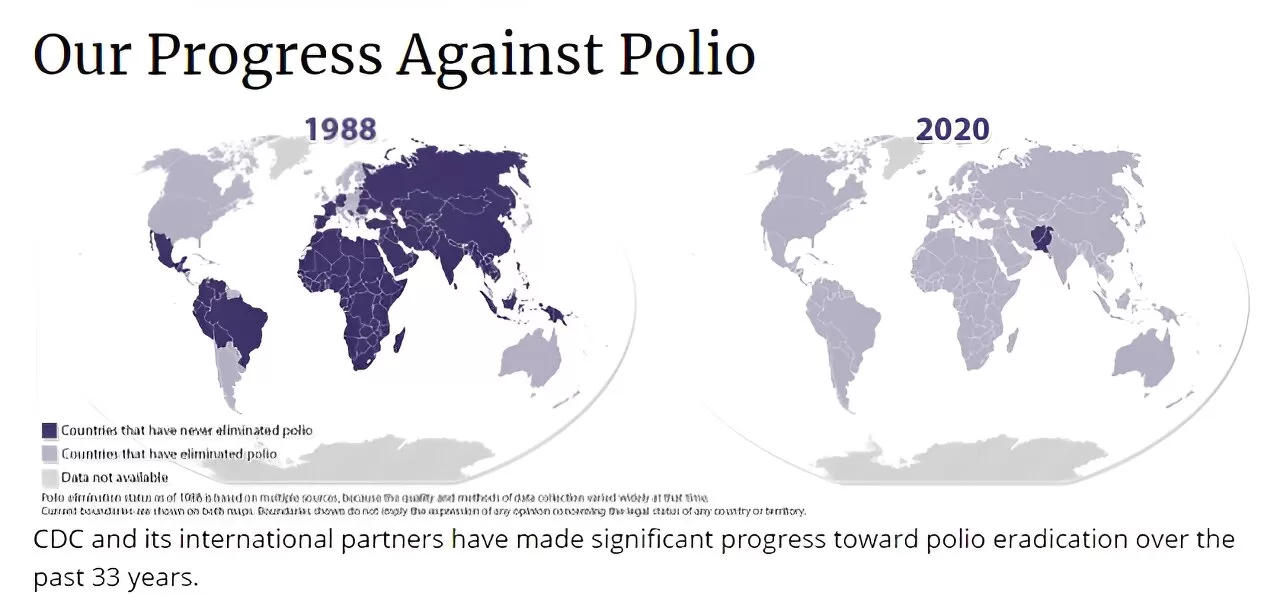A Legacy of Disease and the Quest for a Cure
Poliomyelitis, an ancient scourge, has haunted humanity for centuries, causing widespread disability and death. Though it is now nearing eradication, polio’s global history tells a profound story of the power of scientific innovation, public health collaboration, and the resilience of human communities. Polio is caused by the poliovirus, a member of the Enterovirus genus, which primarily spreads through the fecal-oral route, infecting mainly children. While most cases are mild, 1 in 200 infections can lead to irreversible paralysis, with up to 10% of those paralyzed dying from respiratory failure.
Polio Through the Ages
Historically, cases of paralytic polio were sporadic. Famous artwork from ancient Egypt depicts individuals with withered legs, likely polio survivors. However, it wasn’t until the 19th century, as human populations grew and clustered in cities, that widespread polio outbreaks became common. The first major epidemic occurred in Vermont, USA, in 1894, which marked the beginning of a series of terrifying polio outbreaks that would sweep the globe in the following decades.
At the height of the pandemic in 1952, 21,000 cases of paralytic polio were recorded in the U.S. alone. The disease left many people permanently disabled, reliant on wheelchairs, crutches, or even iron lungs to breathe. Despite improved hygiene practices in industrialized nations, which were expected to reduce the disease’s spread, the opposite occurred—infants in cleaner environments were less exposed to poliovirus, making them more vulnerable to severe cases later in life.
The March of Dimes and Vaccine Breakthroughs
In 1921, former U.S. President Franklin D. Roosevelt was paralyzed by polio, and his personal battle with the disease shifted public attitudes. In 1938, Roosevelt’s “March of Dimes” initiative brought together everyday Americans in a unique fundraising effort to support polio research, paving the way for one of the most successful public health campaigns in history.
By 1955, Dr. Jonas Salk’s inactivated polio vaccine (IPV) had been successfully tested and distributed, drastically reducing the incidence of the disease. Salk’s decision to forgo patenting the vaccine, famously stating, “Could you patent the sun?”, ensured that his life-saving breakthrough would be accessible to all. A few years later, Dr. Albert Sabin’s oral polio vaccine (OPV) provided another critical tool in the fight against polio. Administered as drops, it was easier to distribute and helped break chains of transmission.
Global Collaboration for Eradication
The Global Polio Eradication Initiative (GPEI), launched in 1988, was a collaborative effort that brought together the World Health Organization (WHO), Rotary International, UNICEF, and other global health partners. At that time, polio was endemic in 125 countries and paralyzed 1,000 children daily. Today, thanks to over 2.5 billion vaccinations administered worldwide, the disease has been eradicated from all but two countries—Pakistan and Afghanistan.
Challenges Remain
Despite the remarkable progress, recent cases have reminded the world that polio is still a threat. In June 2024, Gaza reported a reemergence of variant poliovirus type 2 (cVDPV2), detected in environmental samples after 25 years of polio-free status. This resurgence underscores the vulnerability of conflict zones, where sanitation and access to healthcare are often compromised. In response, the WHO and partners are deploying novel oral polio vaccines (nOPV2) to protect communities from paralysis and halt transmission.
The Final Push
As polio’s strongholds shrink, the global health community remains vigilant. The fight to eliminate polio has united over 200 countries and millions of volunteers, creating one of the largest public health campaigns in history. With the disease now 99.9% eradicated, the world stands at the cusp of ending polio forever—a triumph of science, collaboration, and human perseverance.
As we enter this final phase, the lessons learned from polio’s history serve as a reminder that with unity and determination, the world can overcome even the most daunting health challenges.












